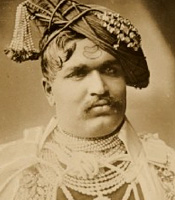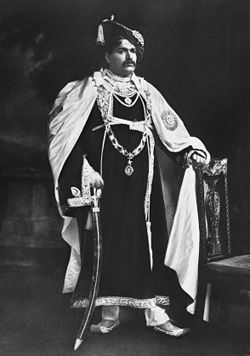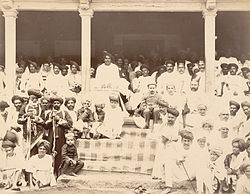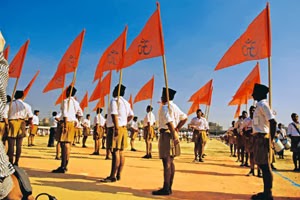New Delhi: A US-based risk management and consulting company has put the Rashtriya Swayamsevak Sangh (RSS) in its category of ‘Threat Group’ and called it “a shadowy, discriminatory group that seeks to establish a Hindu Rashtra, a Hindu Nation.”
Terrorism Watch & Warning provides
intelligence, research, analysis, watch and warning on international
terrorism and domestic terrorism related issues; and is operated by OODA
Group LLC that helps clients identify, manage, and respond to global
risks and uncertainties while exploring emerging opportunities and
developing robust and adaptive strategies for the future.
Although the company had included RSS in its ‘Threat Group’ in April
2014, the post seems to have been modified after the BJP led government
assumed power at the Centre. Apart from the RSS, Terrorism Watch has
also put Naxalites, People’s Liberation Army (PLA) and Students’ Islamic
Movement of India (SIMI) among others in the category of ‘Threat
Group’.
The websites describes:
“The RSS is a shadowy, discriminatory group that seeks to establish a
Hindu Rashtra, a Hindu Nation. The group is considered the radical
ideological parent group of India’s ruling Hindu nationalist party – the
Indian Peoples Party (BJP).”
“The RSS is a Hindu nationalist movement, a right wing group that was
founded in 1925. Their philosophy, called Hindutva, was termed fascist
by Communists, and their main demand of the central government was that
it stop appeasing Muslims,” the description continues, adding, “Hindutva
has been translated to mean variously: Hindu pride, patriotism,
fundamentalism, revivalism, chauvinism, or fascism. The group
self-justifies by ‘asserting the natural rights’.”
In its ‘Intel analysis,’ it further adds, “The RSS was banned in 1948 following the assassination of Mahatma Gandhi
by an ex-RSS member, Nathuram Godse. The ban was lifted the following
year. Since then, the group has gained popularity. It later began the Bharatiya Janata Party (BJP), widely considered the political arm of the RSS, which now heads the central government of India.”

Describing violence as ‘Group Activities’ for the RSS, the site further says, “Violence has been a strategy for the Sangh movement.
It is often couched as a method of self-defense against minority
groups. Hindutva has been clear about the need for violence,
particularly communal riots. The Sangh has incited rioting to cause
further chasms between religions, and thus a further separation of
religions, and to rally the Hindu community around the philosophy of
Hindutva.”
The Terrorism Watch & Warning database contains over 1,00,000
Open source intelligence (OSINT) excerpts from 1999 to present on
terrorism and security related issues, attack database of over 10,000
attacks, original terrorism analysis, terrorism document repository,
Homeland Security Fact Sheets and profiles over 500 Terrorist/Threat
Groups.
http://www.assam123.com/america-enlisted-rss-one-biggest-terrorist-organisation-world/
https://www.hindustantimes.com/india/ban-rss-india-s-no-1-terror-organisation-former-maharashtra-cop/story-EqYMsbzYbhDOtNgocROfNM.html
Ban RSS, India’s no 1 terror organisation: Former Maharashtra cop
Maharashtra’s former inspector general of police SM Mushrif on
Tuesday accused the Intelligence Bureau (IB) of being hand-in-glove
with right-wing extremists, and called for a ban on the RSS describing
it as India’s No.1 terror organisation.
india
Updated: Feb 23, 2016 20:25 IST
Maharashtra’s former inspector general of police SM
Mushrif on Tuesday accused the Intelligence Bureau (IB) of being
hand-in-glove with right-wing extremists, and called for a ban on the
RSS describing it as India’s No.1 terror organisation.
At the
launch of the Bengali version of his book “RSS - Country’s Greatest
Terror Organisation”, Mushrif also termed the ongoing JNU controversy as
a manifestation of the Rashtriya Swayamsevak Sangh’s (RSS) attempt to
turn India into a Hindu nation.
“The IB has been and continues to
be the most powerful organisation in the country and irrespective of
which political party is in power at the centre, it continues to operate
the way it wants.
“Whatever the IB says or does is considered the
truth and its claims or acts are never questioned or verified,” said
Mushrif, indicting the agency for colluding with the RSS and its
subsidiaries for the killing of anti-terror squad chief Hemant Karkare,
who was probing the involvement of Hindu radicals in terror acts.
Karkare was killed during the 2008 Mumbai terror attack.
“No
other terror organisation has used RDX like the RSS has. At least 18
chargesheets have been filed against the RSS and its subsidiaries like
Abhinav Bharat and Bajrang Dal in terror cases.
“The RSS should be immediately banned for being the country’s No.1 terror organisation,” said Mushrif.
Condemning the Jawaharlal Nehru University row, Mushrif expressed alarm over rising right-wing extremism.
“This
is only a manifestation of the RSS’s bid to establish the Aryavart
Hindu Rashtra based on the tenets of Smritis and Vedas. Its time the
entire country stood up against this rise of extremism,” said the author
of “Who Killed Karkare? : The Real Face of Terrorism in India”.
https://en.wikipedia.org/wiki/Saffron_terror
Saffron terror
Jump to navigation
Jump to search
|
|
The neutrality of this article is disputed. (March 2014) (Learn how and when to remove this template message)
|
| Terrorism |
|---|
Saffron terror is a neologism used to describe acts of violence motivated by Hindu nationalism, usually perpetrated by members, or alleged members, of Hindu nationalist organisations like Rashtriya Swayamsevak Sangh (RSS) or Abhinav Bharat.[1][2][3] The term comes from the symbolic use of the saffron colour by many Hindu nationalist organisations.[4][5][6][7]
Contents
Term usage
The first known use of the term “Saffron Terror” is from a 2002 article in Frontline.[8] However, it was in the aftermath of the 29 September 2008 bomb blast in the predominantly Muslim town of Malegaon in Maharashtra that it came to be used widely.[9]
In late 2008, Indian police arrested members of a Hindu cell allegedly involved in the Malegaon blasts. Former Home Minister of India P. Chidambaram urged Indians to beware of “Saffron terror” in August 2010 at a meeting of state police chiefs in New Delhi.[10] Since making that remark, a Hindu swami in the Patan district has filed a defamation
lawsuit against Chidambaram, saying that the saffron colour is a symbol
of Hindu religion and that saints across the country wear attire of the
same colour. The swami also said that saffron was a symbol of peace,
sacrifice and God, and that Chidambaram has hurt the sentiments of
Hindus by linking the symbol with terrorism.[11] On 6 September 2010, a Gujarat court ordered a probe into the use of the term by Chidambaram.[12] Chidambaram was also criticised by members of his own party (the Indian National Congress) for the use of the term, with Congress spokesman Janardhan Dwivedi claiming “terrorism does not have any colour other than black.”[13]
The saffron colour appears in the party flags of various national parties of India like the Indian National Congress and the Bharatiya Janata Party (BJP).[14][15] A saffron-coloured flag is commonly seen in most temples in India. Buddhist monks typically wear saffron robes as a symbol of wisdom.[16]
It has been claimed that the term “saffron terrorism” is a misnomer
considering the historical descriptions of the saffron colour compared
to the definitions of terrorism.[17][18] Saffron is the colour of the upper band of the Indian national flag. Sarvepalli Radhakrishnan,
who was India’s first Vice-President and second President, described
the saffron colour as follows: “Bhagwa or the saffron colour denotes
renunciation of disinterestedness. Our leaders must be indifferent to
material gains and dedicate themselves to their work.”[19]
Criticism of the term
The term “saffron terror” has been called a “myth” by the journalist and BJP leader Balbir Punj, who claims that it is an invention of the Congress party to demonise their political opposition as “terrorists”.[20] Similar views have been expressed by other journalists in India.[21] Kanchan Gupta and Swapan Dasgupta have accused investigators of making statements using “saffron terror” to the media to promote the agenda of the Congress.[22][23] Raman accused the media of measuring Muslim and Hindu suspects by different yardsticks.[24]
The Bharatiya Janata Party’s (BJP) president, Rajnath Singh, spoke of a “political conspiracy” aimed at the “vilification of Hindu saints and army officers in the name of Hindu terrorism”.[25]
In 2010, the internet whistleblower organisation WikiLeaks released US embassy cables in which the US ambassador to India scornfully dismissed suggestions by an Indian minister that the death of Hemant Karkare,
a senior anti-terrorism investigator killed by Islamist militants
during the 2008 Mumbai attacks, was somehow orchestrated by Hindu
extremists. The term “saffron terror” was prominently used by some
Congress party members in this campaign, most prominently by Digvijaya Singh.[26][27] The BJP criticised these statements and filed a complaint with the Election Commission of India,
citing it as a violation of the Model Code of Conduct for political
parties. The Election Commission issued a show-cause notice to Digvijay
Singh on this complaint.[28] The Hindu spiritual leader Sri Sri Ravi Shankar has also criticised it, saying that it is a myth and insult to the Hindu religion, which he said is the most tolerant religion.[29]
On 15 April 2015, the Apex Court ruled that there was no evidence to charge Sadhvi Pragya
and Shrikant Purohit under the stringent MCOCA, and therefore their
bail plea should be examined afresh by the special trial court. A bench
headed by Justice F. M. I. Kalifulla said there is no reliable material
to prima facie show that the duo along with four other accused was “criminally liable under the provisions of MCOCA”.[30]
R.V.S Mani, a former officer in the Home Ministry, published a book Hindu Terror: Insider Account of Ministry of Home Affairs
in 2018, alleging that the UPA government had forced Home Ministry
officials to “manufacture” a false narrative about the presence of
“Hindu terror”.[31]
Incidents
Hindu extremist organisations have allegedly carried out terrorist attacks like 2006 Malegaon blasts, Mecca Masjid bombing (Hyderabad), Samjhauta Express bombings and the Ajmer sharif dargah blast. There are some links and connections with Islamist organisations with these blasts.[32][33]
Arif Qasmani of Karachi has been specifically named by the
notification on 1 July 2009, by the US Department of Treasury as
involved in the Mumbai suburban train blasts of July 2006, and in the
Samjhauta Express blast of February, 2007.[33][34]
1999 killing of Graham Staines
The killing of Graham Staines has been cited as example of Saffron terror.[35] Staines, a Christian missionary, and his two sons were burned to death in January 1999. In 2003, a Bajrang Dal activist, Dara Singh, was convicted of leading the gang that murdered Graham Staines and his sons, and was sentenced to life in prison.[36]
2002 Gujarat riots
The 2002 communal riots in Gujarat, where the majority of victims were Muslims, are attributed largely to “foot soldiers” of the Hindutva movement.[37] The riots are part of a recent rise of Hindu extremist movements in India that have been linked to Saffron terrorism.[37]
2007 Samjhauta Express bombings
Twin blasts shook two coaches of the Samjhauta Express around midnight on 18 February 2007. Sixty-eight people were killed in the ensuing fire and dozens were injured.[38] It has been allegedly linked to Abhinav Bharat, a Hindu fundamentalist group.[39]
In November 2008, it was reported that the Maharashtra Anti-Terrorism
Squad (ATS) suspected the attacks were linked to Prasad Shrikant
Purohit, an Indian army officer and member of Abhinav Bharat.[40]
Purohit himself claimed that he had “infiltrated” the Abhinav Bharat.
During an army’s Court of Inquiry, 59 witnesses stated to the court,
along with Officers who testified, that Purohit was doing his job of
gathering intelligence inputs by infiltrating extremist organisations.[41][42] On 8 January 2011, Swami Aseemanand, a pracharak of the Rashtriya Swayamsevak Sangh (RSS), confessed that he was involved in the bombing of Samjhauta express,[43] a statement he later claimed to have made under duress.[44] Aseemanand claimed that he was tortured to give a false statement.[45]
There have also been allegations that Lashkar-e-Taiba was responsible for the bombings.[46] The United States declared Arif Qasmani, a Pakistani national and alleged ‘LeT financier’, to be the chief coordinator of the 2006 train bombing in Mumbai as well as the 2007 Samjhauta Express bombings, and labelled him an international terrorist via the United Nations.[47][48][49]
2007 Ajmer Dargah attack
The Ajmer Dargah blast occurred on 11 October 2007, outside the Dargah (shrine) of Sufi saint Moinuddin Chishti in Ajmer, Rajasthan, allegedly by the Hindutva organisation Rashtriya Swayamsevak Sangh (RSS) and its groups.[50][51][52]
On 22 October 2010, five accused perpetrators, of which four said to
belong to the RSS, were arrested in connection with the blast.[53][54] Swami Aseemanand, in his confession, implicated the then General Secretary Mohan Bhagwat for ordering the terrorist strike.[55] Bhavesh Patel, another accused in the bombings, has corroborated these statements but later claimed that the Home Minister Sushilkumar Shinde and some other Congress leaders forced him to implicate the RSS leaders.[56]
2008 Malegaon blasts
On 29 September 2008, three bombs exploded in the States of Gujarat and Maharashtra
killing 8 persons and injuring 80. During the investigation in
Maharashtra, a Hindu group was alleged to have been involved in the
blasts. Three of the arrested persons were identified as Sadhvi Pragya Singh Thakur,[57][58]
Shiv Narayan Gopal Singh Kalsanghra and Shyam Bhawarlal Sahu. All three
were produced before the Chief Judicial Magistrate’s court in Nashik, which remanded them to custody till 3 November.[59] On 28 October, the Shiv Sena,
came out in support of the accused saying that the arrests were merely
political in nature. Lending credence to this, the party chief, Uddhav Thackeray, pointed out a potential conflict of interest in political rivalry as the Nationalist Congress Party (NCP) controlled the relevant ministry.[60]
NIA, National Investigation Agency, has found no evidence against
Sadhvi Pragya Singh Thakur and it has recommended the court to drop all
charges against her.[61][62] following which Bombay High Court granted bail to Pragya Thakur on 22 April 2017.[63][64]
The Army officer Prasad Shrikant Purohit was also accused of being involved in the blast.[65]
His counsel alleged that he was being falsely framed for political
reasons because he has intelligence data of a sensitive nature
pertaining to the operations of Students Islamic Movement of India (SIMI) and Pakistan’s Inter-Services Intelligence, which could embarrass some quarters.[66]
2007 Mecca Masjid bombing
The Mecca Masjid bombing occurred on 18 May 2007 inside the Mecca Masjid, a mosque in Hyderabad. Fourteen people were reported dead in the immediate aftermath.[67] The National Investigation Agency,[68] Central Bureau of Investigation[69] and Anti Terrorist Squad (India)[70] questioned former members of the RSS[71][72] On 19 November 2010, the Central Bureau of Investigation produced Swami Aseemanand
before the court in connection with the Blast. But later he has
retracted the confession citing the mental and physical pressure to
provide that confession.[73]
The Special investigation Team (SIT) of Hyderabad Police arrested
‘south India commander’ of the LeT, identified as Shaik Abdul Khaja
alias Amjad, from Afzalgunj area of the city. Police said that the
arrestee was linked to Mohammed Abdul Shahid Bilal, key suspect in the
bombing.[74] In 2013, Yasin Bhatkal confessed that Indian Mujahideen had bombed two other places in Hyderabad later in August 2007 to avenge Mecca Masjid blast which was then allegedly attributed to Hindu fundamental groups.[75]
The South Asia Terrorism Portal,[76] the Institute for Defence Studies and Analyses,[77] the National Counter Terrorism Centre[78] the United States,[79] and the United Nations[80] reported that Harkat-ul-Jihad al-Islami
was actually behind the attacks while excluding involvement by any
Hindu group. Noting this, security analyst Bahukutumbi Raman has
questioned “the two different versions that have emerged from Indian and
American investigators.”[81] The South Asia Terrorism Portal cited Vikar Ahmed as a main suspect in the blast.[74][82]
Mohammed Abdul Shahid Bilal, former chief of HuJI’s Indian operations,
is also regarded as a key suspect in the Mecca Masjid bombing. Later he
was shot by unknown gunmen in Karachi on 30 August 2007.[74][83] .
2018 Court Verdict
The NIA began the probe in April 2011 after the initial
investigations by the local police and the chargesheet filed by the CBI.
226 witnesses were examined during the trial and about 411 documents
exhibited. The verdict was pronounced by a special NIA court acquitting
all the accused due to lack of evidence.[84]
Other allegations
Members of Abhinav Bharat have been alleged to have been involved in a plot to kill Rashtriya Swayamsevak Sangh President Mohan Bhagwat,[85] allegedly with the help of Pakistan’s Inter-Services Intelligence.[86] Headlines Today released a recorded video tested by the Central Forensic Science Laboratory which indicated the uncovering of an alleged plot to assassinate the Vice-President of India Hamid Ansari.[87]
Tehelka also released alleged audio tape transcripts of main
conspirators of Abhinav Bharat, which indicated involvement of Military
intelligence officers with the Abhinav Bharat group, in their January 2011 edition.[88]
The Indian Home Secretary Raj Kumar Singh
said that at least 10 people having close links with the Rashtriya
Swayamsevak Sangh (RSS) and its affiliated organisations were named
accused in various acts of terror across India.[89]
According to released documents by WikiLeaks, Congress(I) party’s general secretary Rahul Gandhi remarked to US Ambassador Timothy Roemer,
at a luncheon hosted by Prime Minister of India at his residence in
July 2009, that the RSS was a “bigger threat” to India than the Lashkar-e-Tayiba.[90]
At The Annual Conference of Director Generals of Police held in New
Delhi on 16 September 2011, a special director of the Intelligence
Bureau (IB) reportedly informed the state police chiefs that Hindutva
activists have either been suspected or are under investigation in 16
incidents of bomb blasts in the country.[91][92]
Torture by Maharashtra ATS
After receiving a complaint letter, the National Human Rights Commission
(NHRC) has initiated a probe into the allegation that Melagaon blast
accused Sadhvi Pragya Singh Thakur was illegally detained and tortured
by the Maharashtra ATS and state police. The statement was recorded at
the Ved Khushilal Ayurvedic College where Pragya is undergoing treatment
as the lower part of her body is now paralysed, which she claims is an
outcome of the police atrocities. A copy of Pragya Thakur’s statement is
with TOI, in which she argued that the Maharashtra police beat her with
leather belts through the nights, starved her for 24 days without even a
morsel of food, gave her electric shocks, verbally abused her and made
her listen to objectionable pornographic recordings in the company of
male undertrials. When an undertrial objected at the Kala Chouki police
station on 26 October 2008, he was brutally beaten.[93]








 Online and Offline Tipiṭaka Law Research & Practice University
in
112 CLASSICAL LANGUAGES
Online and Offline Tipiṭaka Law Research & Practice University
in
112 CLASSICAL LANGUAGES 





